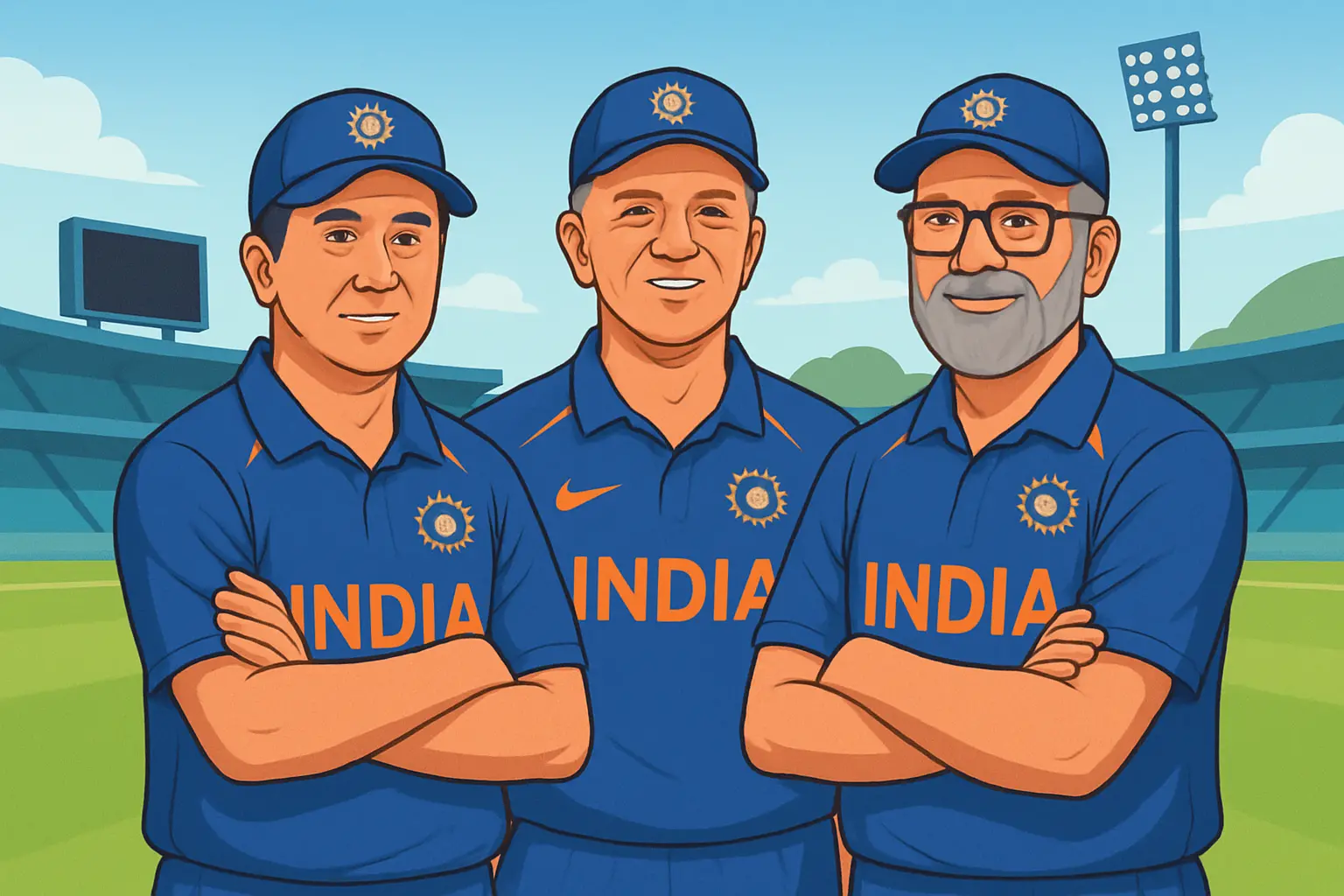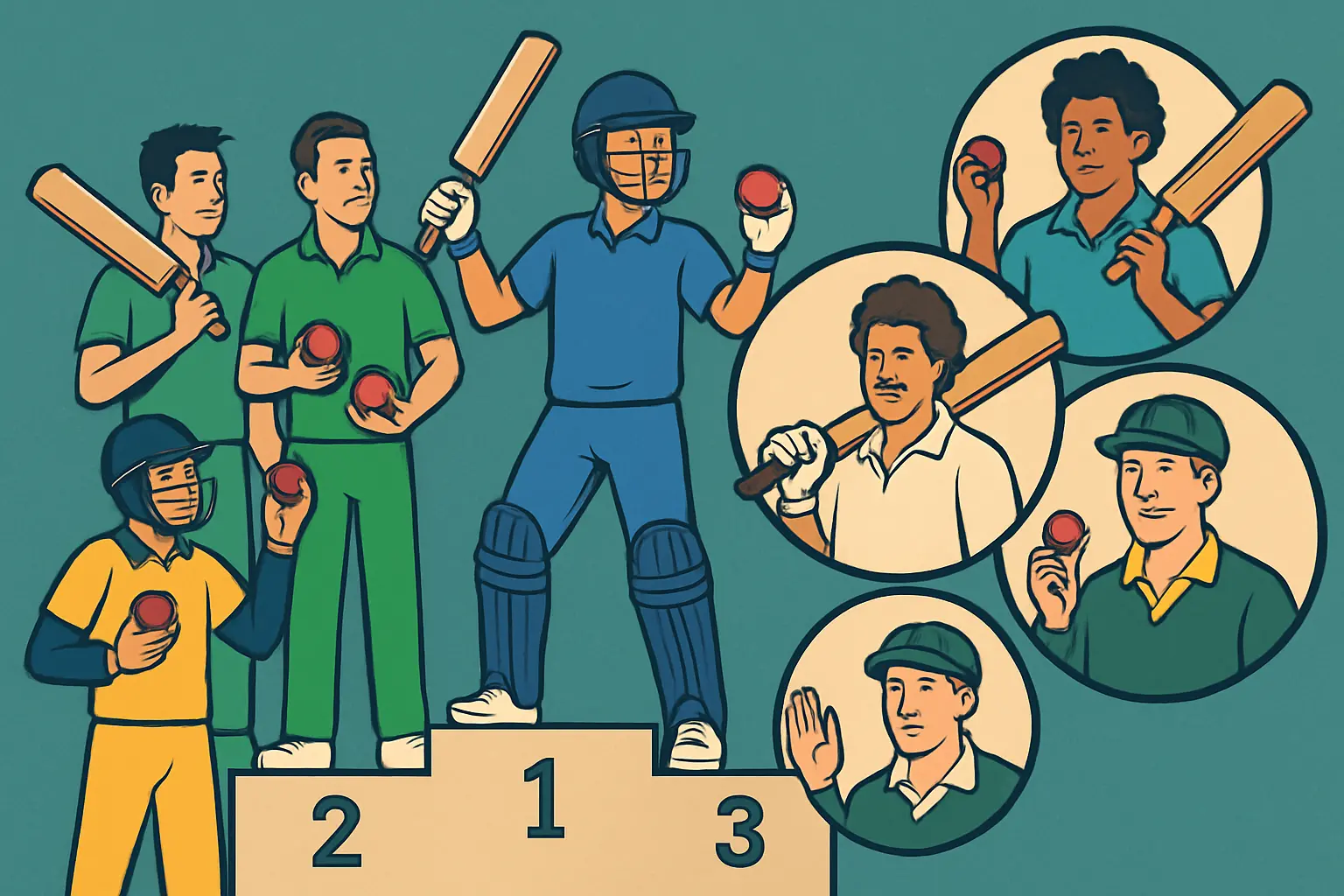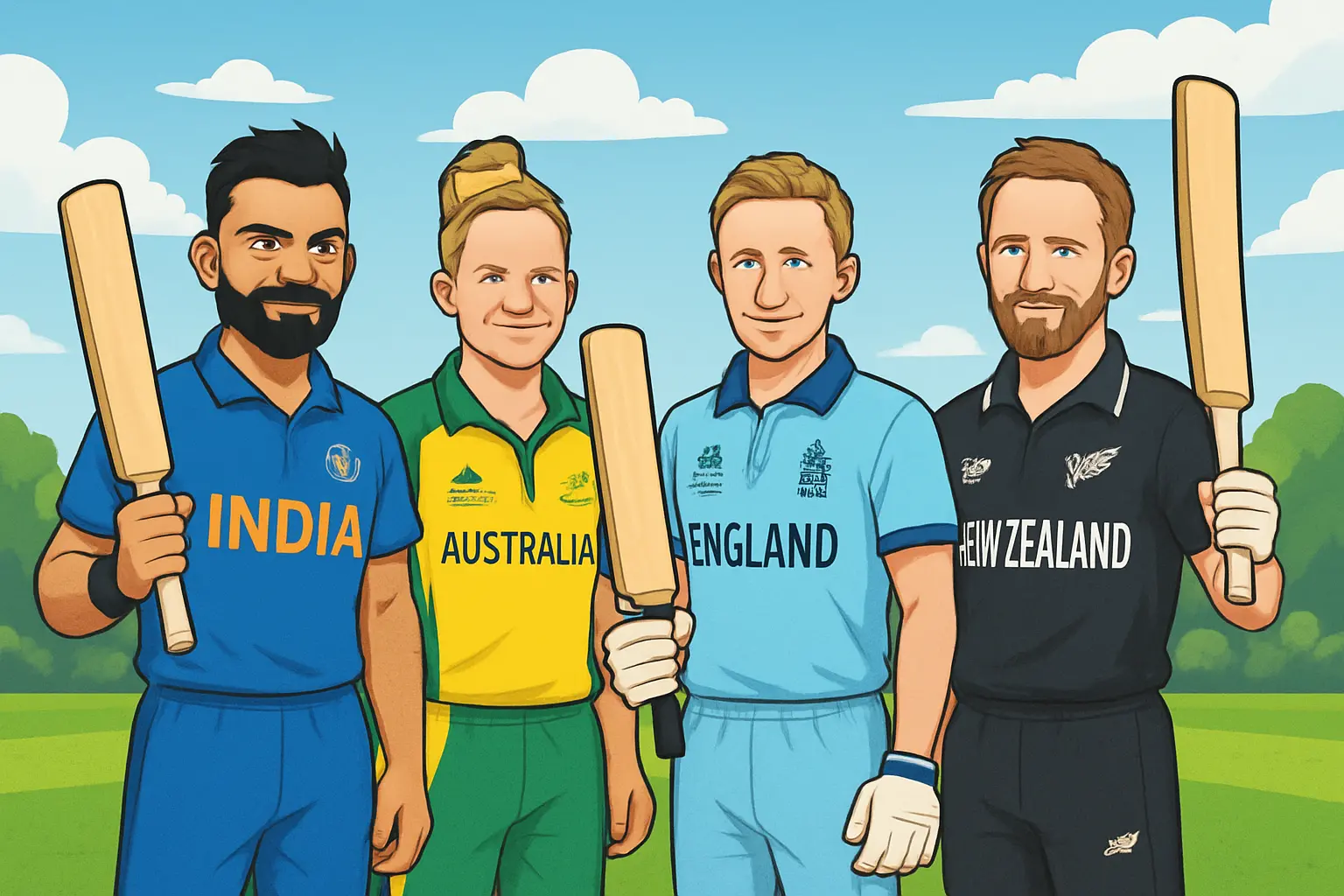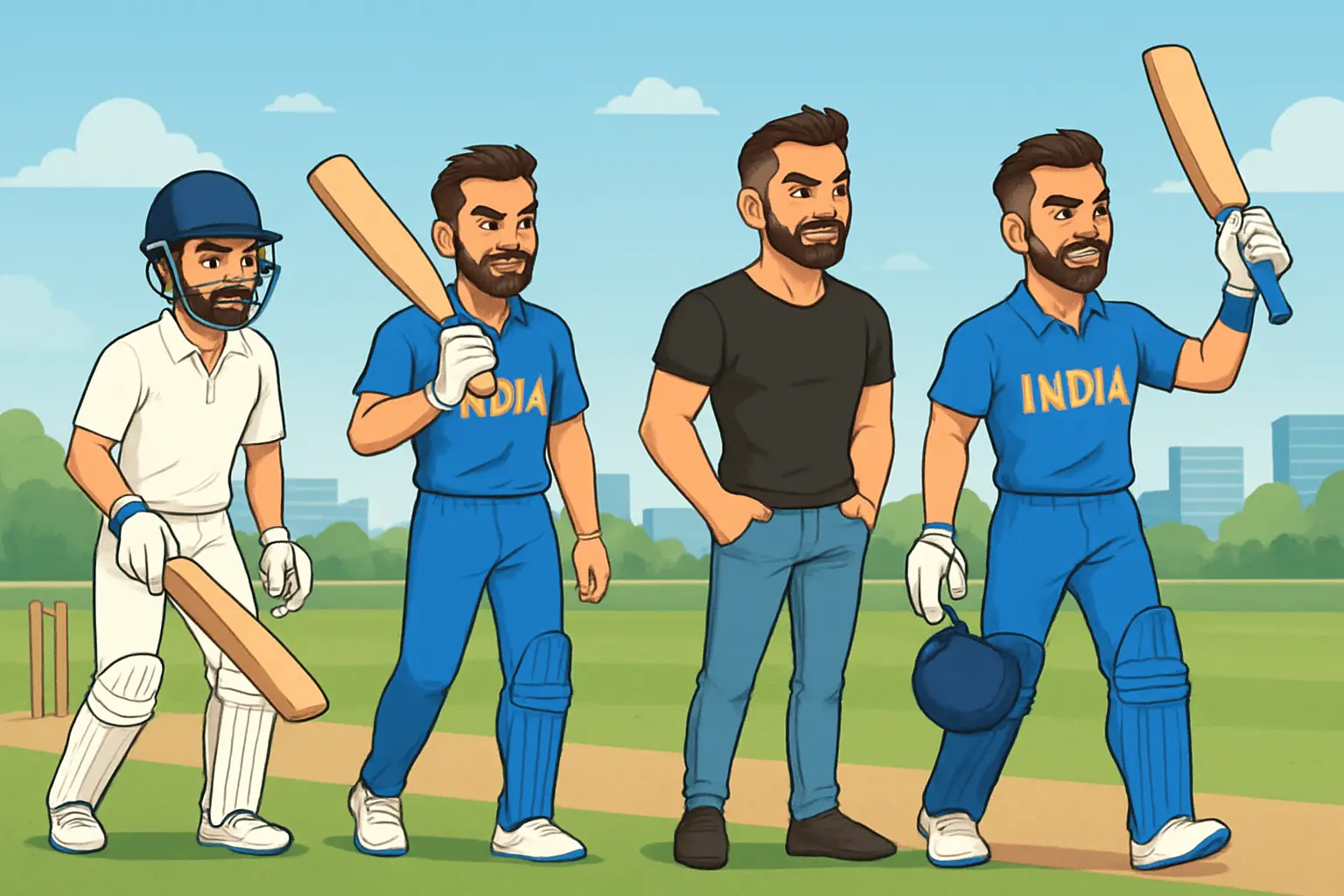The story of Indian cricket coaching lives not in whiteboards or job titles, but in dressing-room silences, throwdown dust, and the gentle breaks between meetings when an assistant whispers the one piece of advice a player carries into a final over. Coaches shape the rhythm of Team India even when the cameras turn away. They set an approach, a vocabulary, a workday, and a standard. Some eras were defined by discipline and organization, some by audacity and player-led freedom, and some by a ruthless focus on fitness and fielding that turned fine cricketers into world-beaters.
This is the definitive, evergreen hub on India national cricket team coaches—current head coach and support staff, complete list and timeline, format-wise achievements by era, the BCCI selection process, salary and contracts, and the roles that actually run the machine behind the stars. Where it adds value, you’ll find structured lists and compact tables. Everything else is explained like an expert would explain it to a friend after a long day at the nets.
Current head coach and support staff
Head coach: Gautam Gambhir
Gautam Gambhir is the current head coach of the Indian men’s national cricket team. His appointment formalized the arc he carved in elite cricket: obsessive preparation, clarity under pressure, and brutal honesty about roles. What defines Gambhir’s coaching voice is a player-first plan with a ruthless accountability framework. If the message during Ravi Shastri’s tenure was aggression and belief, and the Rahul Dravid era was about structure and depth, the Gambhir imprint sits somewhere in between: data-driven choices, role fidelity, and mental sharpness for pressure moments.
You notice it in selection conversations: specialist powerplay strikers in T20s, a clearer plan for the floating role in the middle order, and an emphasis on match-ups curated over long scouting cycles. You see it in practice workloads: more scenario work with constraints, sharper fielding standards as non-negotiables, and an insistence that finishing skills aren’t a gift but a drill. There’s also the Gambhir constant—he will defend his dressing room in public and be unsparing in private. That balance often unlocks the best 5 percent of players who already operate at a high baseline.
Support staff: batting, bowling, fielding, and the high-performance spine
- Batting coach/assistant coach: Abhishek Nayar
A trusted voice for technical simplification and confidence-building. Nayar’s influence across the domestic circuit has been obvious for a long time: personalized routines, high-volume hitting with fatigue switches, and an understanding of modern white-ball triggers. His methods tend to tighten the gap between a player’s “best ball” and their average ball.
- Bowling coach: Vinay Kumar
Former India seamer with deep know-how on new-ball sequencing and end-overs clarity. His sessions typically emphasize length discipline married to batters’ swing arc mapping. Expect an uptick in powerplay seam value and more efficient use of defensive lengths at the death across formats.
- Fielding coach: T. Dilip
One of the quiet architects of India’s recent fielding surge. Dilip’s approach is system-led—lane-based catching plans, position-specific throwing routines, and measurable standards for reaction time and ground coverage. Under him, India has operated with a clean relay ethic and far fewer misfields in the ring.
Key high-performance roles that orbit the coaches
- Performance analyst: Handles opponent scouting, player matchup reports, and post-series reviews. In modern India setups, the analyst is at the table for XI decisions in limited-overs cricket and for specific role definitions across formats.
- Strength and conditioning coach: Oversees load monitoring, sprint patterns, bowling volume thresholds, and return-to-play protocols. The aim is consistent freshness for three formats without sacrificing top-end speed or elasticity.
- Physiotherapist and medical: The medical team is embedded in daily operations, from niggle triage to travel hydration protocols. India’s schedule demands aggressive, science-led load management—particularly for pace bowlers and all-format batters.
- Throwdown specialists/wicketkeeping coach: These specialists often fly under the radar but shape white-ball strike rates and catching consistency. Their daily work sets the baseline skill standard across the squad.
Complete list and timeline of India cricket team head coaches
India’s coaching history is best viewed across two broad chapters: the manager-coach era and the professional head coach era. Earlier tours often listed a manager who functioned as a de facto coach. The role professionalized, then globalized, and finally matured into a high-performance ecosystem with specialized support staff.
Manager-coach era highlights
- Keki Tarapore
- Hemu Adhikari
- Ajit Wadekar
- Sandeep Patil
- Anshuman Gaekwad (two stints)
- Madan Lal
- Kapil Dev
Professional head coach era
- John Wright
- Greg Chappell
- Chandu Borde (manager-in-charge bridge)
- Ravi Shastri (Team Director, interim)
- Gary Kirsten
- Duncan Fletcher
- Ravi Shastri (Team Director, then Head Coach)
- Anil Kumble
- Ravi Shastri (return, Head Coach)
- Rahul Dravid
- Gautam Gambhir
Coach-by-coach eras: philosophy, achievements, and what really changed
Ajit Wadekar, Sandeep Patil, Anshuman Gaekwad, Madan Lal, Kapil Dev
This group worked through a shifting role definition. The manager-coach had to be selector, motivator, logistics handler, discipline officer, and diplomat. India’s fitness benchmarks and fielding standards were still embryonic, and the domestic-to-international transition was governed more by raw ability than by role clarity or specialized preparation. Yet you could already see the seeds: better tour planning, early attention to video analysis, and the first whispers of specialist coaching.
John Wright
The first foreign head coach to properly institutionalize professional planning in Team India. Wright partnered with Sourav Ganguly to reinvent the team’s culture. Two images sum up his era: the Lord’s chase that recalibrated India’s white-ball belief, and gritty overseas Test wins that proved India could control the pace of a match away from home. Wright emphasized clarity in roles, data-led prep for key bowlers, and leadership grooming for future cores. He left a team structured, united, and unafraid.
Greg Chappell
Chappell’s reign was an intervention at speed. He pushed for high standards, bold selections, and a meritocratic pecking order. Fitness and fielding surged. However, the approach delivered turbulence: established voices and the new doctrine clashed, and a global-tournament early exit hurt. Still, his period seeded a more professionalized ecosystem—youngsters knew what fitness looked like, one-day roles were modernized, and the boardroom learned how delicate culture management needed to be.
Gary Kirsten
Man-management masterclass. Kirsten, alongside mental conditioning lead Paddy Upton, moved India from strong to dominant. The big trophies tell a fraction of this story. More telling was the calm tactical clarity under pressure: batting plans that de-fanged extreme pace, a tailorable spin strategy at home, and the gentle but firm continuum from seniors to rising stars. Indian cricket’s batting order matured into a unit that could control run-chases like clockwork. Fielding standards lifted another tier.
Duncan Fletcher
Transition whisperer. Fletcher inherited a team losing several iconic batters and had to build a world-beating unit while away tours piled up. The headlines show a Champions Trophy win and improved limited-overs consistency, but the deeper legacy is structure—bench-building, all-rounder development, and new-ball white-ball plans that aged well. His tenure proved India could sustain high performance despite changing personnel.
Anil Kumble
Short, intense, and principled. Kumble arrived with a clear code: team-first communication, unflinching honesty, and measurable accountability. He championed analytical preparation and demanded standards. The cricket was competitive, the bowling plans were precise, and the team profile was unmistakably tough. A high-profile rift with the captain led to an early end, but Kumble’s impact on culture and analysis-heavy prep stayed in the walls.
Ravi Shastri
Hard-edged freedom and elite fast-bowling development. Under Shastri, India chased greatness away from home and refused to blink. The pace attack matured into a world-class rotation with wobble-seam mastery, reverse-swing control, and fitness levels that allowed four quicks to run teams ragged overseas. The Gabba breach, back-to-back series glory in Australia, and long stretches as the top Test side came with a white-ball ride that swung between dominant and frustratingly near-miss. Shastri’s message remained consistent: back your game, take the fight to the opposition, own the key moments.
Rahul Dravid
The bridge-builder. Dravid didn’t just coach the national side; he completed an idea he helped design through the India A and U19 pathways. Bench strength became a competitive advantage. Rotational tours ensured first-string freshness, second-string readiness, and tactical flexibility. India reclaimed a global T20 title, ran deep at marquee events, and sustained a multi-format presence at the top. Dravid’s legacy is a factory of prepared talent and a professional routine that young players can climb like a ladder.
Gautam Gambhir
The challenger’s edge. Early sessions under Gambhir have emphasized aggressive powerplay batting in T20s, a tighter definition of the “finisher,” and defensive fields tailored to individual batters’ scoring arcs. Expect a relentless limited-overs blueprint: specialists at the top, a stable engine in the middle, and match-up bowling that runs through the opposition’s best hitters with surgical precision. In Tests, Gambhir’s focus sits on ruthlessly turning the screws at home and being clinical overseas—proactive declarations, fielding precision, and discipline in length with the old ball. If Gambhir sustains his method, India’s already-high baseline could tilt toward a trophy-heavy run.
Records and achievements by head coach: a compact view
Instead of bloating this with numbers that age poorly, here is a clear, evergreen scoreboard of major achievements by era. Use it as a quick reference and then dive deeper into the narratives below.
| Coach | Signature achievements | Format identity |
|---|---|---|
| John Wright | Overseas Test wins; white-ball belief; Lord’s chase | Test discipline; fearless ODI chases |
| Greg Chappell | Fitness reset; bold selections | Modernized white-ball roles |
| Gary Kirsten | ODI World Cup; Test supremacy stretch; elite man-management | Pressure-proof batting; flexible spin use |
| Duncan Fletcher | Champions Trophy; bench-building; away-tour learning | Evolving ODI template; stable roles |
| Anil Kumble | Culture and accountability; analytical preparation | Precision plans; high discipline |
| Ravi Shastri | Back-to-back Test series in Australia; long run at the summit; fearless identity | Fast-bowling revolution; aggressive Test cricket |
| Rahul Dravid | T20 world title; sustained depth; Asia Cup; multiple knockouts | Systems-led consistency; multi-format rotation |
| Gautam Gambhir | Early blueprint: powerplay lift, role clarity, matchup bowling | Ruthless T20 method; efficient ODI planning |
India coach vs captain: who does what, really
Head coach
- Owns the long arc: selection framework, role clarity, tour goals, and standards for fitness and fielding.
- Shapes the batting and bowling hierarchies through net plans, workload, and match simulation.
- Drives pre-series planning: conditions mapping, opponent studies, and scenario catalogues (chase plans, collapse plans, lower-order rescue plans).
- Leads post-series audits: which plans translated, who met their role outcomes, where the development gaps sit.
Captain
- Owns the day: toss calls, real-time fielding patterns, bowling changes, batting tempo, and in-match chess.
- Leads the emotional tempo—assertiveness, calm under pressure, micro-communication between overs.
- Executes the coach’s larger method through game-specific decision-making.
At elite level, this is a duet. The most successful Indian eras saw a coach who could frame the mission and a captain who could improvise responsibly within that frame.
How the BCCI selects the head coach
Application window and search brief
BCCI posts criteria and invites applications through an online portal. The brief covers format responsibilities, minimum coaching accreditation, and expectations on domestic scouting. Sometimes the board signals whether it wants a single coach for all formats or a split arrangement.
CAC and interviews
A Cricket Advisory Committee—senior former internationals—shortlists candidates, studies their presentation packs, and interviews them on philosophy, selection approach, staff picks, and high-pressure decision-making. The best candidates demonstrate clarity on all three formats, alignment with India A and NCA pipelines, and a plan to maximize India’s strengths away from home.
Eligibility criteria
A mix of high-level playing experience and top-tier coaching credentials is typical. Elite domestic coaches with proven results and international exposure often feature. Knowledge of Indian domestic structure and pathways is a strong plus, even for foreign candidates.
Contract structure
The head coach is usually appointed for a multi-year cycle that spans major ICC events. The deal is performance-driven with reviews after each cycle and occasional interim assignments for short tours.
Salary and perks
The India cricket team head coach salary sits in the upper tier of global coaching packages. Media estimates place it in an eight-figure INR range annually, with performance bonuses for trophy wins and series victories. Perks generally include business-class travel, daily allowances on tour, accommodation, and the ability to propose assistant coaches, subject to BCCI approval. Exact figures are not publicly disclosed by BCCI.
Can a foreign coach lead India?
Yes. India has had successful foreign coaches, especially during the modern professional era. Fit with Indian conditions and the domestic calendar is a key filter.
Assistant coaches and specialist roles: who does what, and why it matters
Batting coach
- Technical triage: grips, back-lift paths, trigger tweaks.
- White-ball finishing: deep practice against yorkers, wide lines, slow balls; pressure drills with fatigue.
- Red-ball tempo: leaving on length, second-spell strategies, corridor patience.
- Case study: During Vikram Rathour’s spell, several top-order batters reset their trigger movements to tackle high pace and seam away; Sanjay Bangar earlier focused on batting through collapses with repeatable rescue routines.
Bowling coach
- Seam unit: hard-length discipline, wobble-seam control, old-ball reverse, sequence programming for left-right combos.
- Spin unit: fields for attack vs defense, pace on the ball in shorter formats, variations without telegraphing.
- Case study: Bharat Arun’s tenure cemented India’s fast-bowling revolution—four quicks in overseas Tests with sustainable speeds and control. Paras Mhambrey later balanced workloads in a packed three-format calendar, protecting strike pacers while tracking bench options.
Fielding coach
- Catching architecture: slips vs ring workloads by role, transition footwork from gather to release, outfield catching under lights with variable spin.
- Throwing metrics: release time targets, run-up angles, relay timing standards by boundary position.
- Case study: R. Sridhar’s influence moved India’s white-ball fielding from decent to excellent—better angles, one-hand pickups on the move, and communication standards around the ring. T. Dilip sustained that rigor with structured lane-based drills.
Performance analyst
- Strength of shot charts across lengths and angles; personalized matchup sheets.
- Bowlers’ release point drift, seam position, and length maps against specific batters.
- Review loops: clips for immediate feedback, deep dives between series.
Strength and conditioning and medical
- Oversight of sprint, strength, and endurance cycles to survive a three-format load.
- Bowling load caps, warning flags for backs and hamstrings, and heat-management protocols during subcontinental summers.
- Return-to-play harmonized across NCA and national team, ensuring path back after rehab is efficient and reliable.
India national cricket team support staff: the standard list of roles
- Head coach
- Batting coach/assistant coach
- Bowling coach
- Fielding coach
- Performance analyst(s)
- Physiotherapist(s)
- Strength & conditioning coach(es)
- Throwdown specialists
- Logistics manager
- Media manager
India coaches by tournament moments: who was in charge for what
- ODI World Cup triumph: Gary Kirsten
- T20 world title in the modern era: Rahul Dravid
- Champions Trophy success: Duncan Fletcher
- Back-to-back away Test series wins in Australia: Ravi Shastri
- The Lord’s chase that reset India’s white-ball belief: John Wright
India coach win–loss record by format: what the numbers tell without drowning in decimals
Coaching records are best understood through identity and consistency.
What matters more than raw percentages
- Away performance against top sides in Tests and key bilateral ODI/T20 series.
- Knockout matches at ICC tournaments.
- Player development: how many role-ready players emerged and sustained careers.
- System-building: did the coach leave behind structures that future teams benefited from?
The best resumes across dimensions
- Gary Kirsten: major global crown and composed multi-format consistency.
- Ravi Shastri: historic away Test dominance, fearlessness, pace-bowling apex.
- Rahul Dravid: world T20 title and bench-building success while staying competitive across formats.
- Duncan Fletcher: trophy plus transition under control.
- John Wright: set the modern foundation and empowered a golden generation.
Format notes: tactical shifts by coaching era
Tests
- From steady attrition to proactive control: India moved from containment-first plans to striking hard at the right moments with four pacers, data-led fields, and back-up skill sets for unexpected conditions.
- Spin stayed king at home but underwent evolution—higher pace through the air, subtle drift variation, and smart use of fields to invite the risky stroke.
ODIs
- The top-order dominance that began in earlier eras found intelligence under Kirsten and Fletcher with chase mastery and clearer middle-overs plans.
- Finishers became a specialized role; the best coaches ensured a No.6/No.7 template that could handle both rescue and acceleration.
T20Is
- India learned T20 the hard way at first—playing ODI cricket in a shorter time. Modern eras fixed that: powerplay intent, middle-overs match-ups, bowling plans for the phase, and fielding as a non-negotiable advantage. Dravid’s period locked a world title; Gambhir’s early blueprint suggests relentless powerplay scoring and match-up bowling will be a defining theme.
Assistant and specialist coaches: name-checks that shaped eras
- Batting: Sanjay Bangar and Vikram Rathour drove role clarity and technical resets.
- Bowling: Bharat Arun built the fast-bowling juggernaut; Paras Mhambrey fine-tuned workloads and tactical depth.
- Fielding: R. Sridhar lifted standards dramatically; T. Dilip has systematized them.
- Spin and consultant roles: Periodic camps with spin specialists have helped modern batters read wrist-spin better while spinners sharpened pace variation.
Who’s the current head coach of the Indian men’s team?
Gautam Gambhir is the present coach of the Indian men’s cricket team and leads across formats.
Who handles batting, bowling, and fielding right now?
Abhishek Nayar (batting/assistant), Vinay Kumar (bowling), T. Dilip (fielding).
How many coaches has India had?
Counting the manager-coach era and the professional head-coach era, India has cycled through multiple appointments and interim stints. The standout names are listed above in order, covering both eras without redundancies.
Foreign coaches who coached India
John Wright, Greg Chappell, Gary Kirsten, and Duncan Fletcher formed the backbone of India’s foreign-coach chapter, each bringing distinct methods and helping India globalize its standards.
India’s coaching influence at marquee events
- Global ODI crown: Kirsten’s calm, flexible batting plans and senior core synergy.
- Global T20 crown: Dravid’s system depth, bowling match-ups, and batting clarity under crunch.
- Champions trophy: Fletcher’s stability in a transition phase and tactical efficiency.
Coach impact: home vs away
Home
- India’s home dominance was never in doubt but became surgical: spin rotations aligned with exact fields, batters paced innings like clockwork, fast bowlers learned how to be threatening on flat tracks with reverse and wobble.
Away
- The giant leap appeared under Shastri with a fast-bowling stable capable of bossing sessions. Dravid kept the away-lift going with broader rotation and bench readiness, and Gambhir’s early focus indicates continued emphasis on the fast-bowling core mixed with fearless batting tempo in tough conditions.
BCCI head coach application and pathway
Where it appears
- The official BCCI website hosts the application with role requirements and submission details. Timelines and exact criteria vary based on board planning and calendar windows.
Candidate profile that wins interviews
- Demonstrated success at elite level—international or high-grade domestic coaching.
- Evidence of player development and pathway integration (NCA, India A).
- Modern methods: data comfort, pressure drills, clear plans for each format.
- Leadership: the room listens, and the media respects the message.
Common interview themes
- “How will you manage three formats?” “What is your plan for away tours?” “What support staff will you bring?” “How will you keep the team fresh and hungry through long cycles?” Successful candidates give sharp, specific answers that include sample session plans, rotational models, and fielding benchmarks.
Compact table: India head coaches and signature contributions
| Coach | Coaching signature | Trophies and landmarks |
|---|---|---|
| John Wright | Structure + belief; empowered leadership | Overseas Test wins; iconic ODI chases |
| Greg Chappell | Fitness and selections reset | Modernized roles despite turbulence |
| Gary Kirsten | Man-management, calm under pressure | ODI World Cup; Test peak stretch |
| Duncan Fletcher | Transition, bench-building | Champions Trophy; template stability |
| Anil Kumble | Accountability; analytics | Strong culture reset |
| Ravi Shastri | Fearless Test cricket; fast-bowling peak | Historic away series; long top ranking run |
| Rahul Dravid | Systems and depth | World T20 title; Asia Cup; multi-format consistency |
| Gautam Gambhir | Powerplay intent; matchup precision | Ongoing blueprint; early gains |
India coach vs Australia and Pakistan coach salaries: a realistic comparison
India’s head coach package typically sits at or near the top of the international market thanks to cricket’s commercial gravity in the country and the scale of responsibilities. While exact numbers are non-public, India’s coach is widely believed to earn more than most counterparts, often meaningfully more than Pakistan’s coach and competitively against Australia’s. What the paycheck doesn’t show is the lifestyle toll: India’s coach runs a vast ecosystem, fields immense public pressure, and manages a relentless calendar.
Who was India’s coach in the ODI World Cup win?
Gary Kirsten.
Who guided India to the recent T20 world crown?
Rahul Dravid.
Indian vs foreign coaches for India: the verdict
- Foreign head coaches helped professionalize and globalize the team’s daily habits, from analytics to conditioning and pre-series depth mapping.
- Indian head coaches pressed advantages unique to the domestic structure—spinning pitches know-how, workload management across an epic calendar, and cultural clarity inside a uniquely intense media ecosystem.
- The best path forward is the current synthesis: Indian leadership with global best practice and a support staff aligned with the NCA engine.
Frequently asked questions (English)
- Current head coach of the Indian cricket team
Gautam Gambhir. - Present batting, bowling, and fielding coaches
Abhishek Nayar (batting/assistant), Vinay Kumar (bowling), T. Dilip (fielding). - How is the India head coach selected?
BCCI invites applications, the CAC interviews candidates, and the board appoints the coach for a multi-year cycle. The head coach may propose support staff. - What is the salary of the India cricket team coach?
An eight-figure INR annual package according to media reports, plus performance bonuses and travel/perks. Exact figures are not officially published. - Who was India’s coach during the ODI World Cup win?
Gary Kirsten. - Who led India to the recent T20 world title?
Rahul Dravid. - Who is the India U19 coach right now?
The U19 role rotates under the NCA umbrella; recent cycles have featured former internationals with strong domestic coaching experience. - Who is the India Women’s team head coach?
India Women have a full-time head coach supported by specialist staff; the setup is aligned with BCCI’s high-performance structure.
Short Hindi FAQ block
- भारतीय पुरुष क्रिकेट टीम का मुख्य कोच कौन है?
गौतम गंभीर. - बैटिंग, बॉलिंग और फील्डिंग कोच कौन हैं?
अभिषेक नायर (बैटिंग/असिस्टेंट), विनय कुमार (बॉलिंग), टी. दिलीप (फील्डिंग). - भारतीय टीम के कोच का वेतन कितना होता है?
मीडिया रिपोर्ट्स के अनुसार प्रति वर्ष करोड़ों में, साथ में परफॉर्मेंस बोनस और अन्य सुविधाएँ। सटीक आंकड़े सार्वजनिक नहीं होते. - भारत ने हाल का टी20 विश्व ख़िताब किस कोच के तहत जीता?
राहुल द्रविड़. - भारत के वनडे विश्व कप जीत के समय कोच कौन थे?
गैरी कर्स्टन.
Tactical deep-dive: what separates elite India coaching from the rest
- Role clarity over reputation
The best India coaches told match-winners exactly how to win matches. The No.6 knew whether he was a rescue man or a 25-ball finisher. The left-arm seamer knew whether his Phase 2 plan was cross-seam into the pitch or the hard length under the bat. Reputations didn’t guide selections; roles did. - Fielding as a skill economy
Indian cricket’s biggest non-batting leap came through fielding drills with strict measurement. Under Sridhar and Dilip, India learned to control the running game, kill the extra run, and hold the half-chances that flip T20s. - Pace as an attacking identity
Bharat Arun’s program, sustained by subsequent coaches, moved pace from support act to headliner. Wobble seam, relentless length, and conditioning created India’s most intimidating away weapon. That identity still defines how India expects to win overseas Tests. - White-ball match-ups
India’s white-ball evolution is a quiet triumph. Gone are the days of batting heroism alone; in its place, a clinical sequence of overs against each opposition batter profile and a batting handoff that keeps the asking rate honest. - Pathway integration
The Dravid era knitted the NCA pipeline into national-team routines. Gambhir’s early moves build on that clarity—no debutant arrives unsure of what is expected.
Who was the coach in these India milestones?
- The Lord’s chase that launched a fearless white-ball era: John Wright.
- ODI World Cup win on home soil: Gary Kirsten.
- Champions Trophy: Duncan Fletcher.
- The Gabba breach and consecutive Test series in Australia: Ravi Shastri.
- The recent T20 world title: Rahul Dravid.
India national cricket team coaches timeline: the simple narrative
- Early manager-coach years: the role flexed between logistics and mentorship; standards were uneven, and systems were nascent.
- Professionalization with Wright: planning, belief, away confidence, and a leadership cohort emerged.
- Chappell’s sharp reset: fitness, selections, turbulence, lessons learned.
- Kirsten’s calm ascendancy: world champions, serene processes, Test excellence.
- Fletcher’s transition management: trophy in the cabinet and structure for the next wave.
- Kumble’s accountability: precise plans and a high bar for honesty.
- Shastri’s swagger and speed: a fast-bowling golden run and overseas legend.
- Dravid’s depth and discipline: bench strength, a T20 crown, and a system that just worked.
- Gambhir’s early edge: hard-nosed roles, matchup clarity, and a push to convert near-misses into medals.
India coach for marquee tournaments and finals
- T20 World Cup this cycle: Gautam Gambhir leads, barring any structural change announced by BCCI.
- World Test Championship final cycles: The head coach leads across formats; should BCCI opt for split coaching, any update appears on the board’s official channels. At present, India runs a unified head coach model.
Inside the dressing room: how a Team India week under a modern coach looks
- Day minus three: Opponent analysis packets; bowlers receive batter heat maps; batters get match-up cues. Conditioning top-ups; optional skills.
- Day minus two: Full nets with scenario constraints—powerplay assaults, middle-overs anchors, death overs. Bowlers run through spell scripts with fields in place.
- Day minus one: Fielding intensity day; catching lanes, boundary relays, point and cover reaction drills. Bowlers touch up yorkers and slower balls; batters calibrate finishing ranges.
- Game day: Captains’ prep with the coach, final XI logic review. In-match analytics flow to the dressing room with phase-specific cues.
- Post-game: Quick debrief on process metrics (not just result), then rest and reset.
Why India’s coaching job is the hardest—and the most rewarding—in international cricket
- Three-format grind with minimal let-up.
- An emotionally invested fanbase that tracks every call.
- Media glare at a scale no other cricket nation experiences.
- The deepest domestic pool in the sport, which is a blessing and a selection headache.
- Expectations of near-perfection at home and competitiveness everywhere else.
When it clicks, though, it feels like conducting a symphony with a hundred instruments. The head coach isn’t playing a note; he’s hearing how it all fits and nudging sections to rise at the right moments.
Final word: what to watch in the Gambhir era
- Powerplay batting in T20Is: India’s gear up front will be more aggressive by design.
- Finishing roles: Expect repeatable drills translating into more 12-ball impact cameos, not just occasional explosions.
- Death bowling: Phase-specific plans, especially wide-line execution to deny leverage hitters.
- Test tempo: Quick pushes for results at home, firm patience away, an unromantic willingness to pick four quicks when it suits.
- Pathway integration: NCA alignment will remain strong; role-ready debuts will keep India competitive across formats even with injuries or rest rotations.
India national cricket team coaches have journeyed from managers carrying paperwork to head coaches running high-performance ecosystems. The present coach of the Indian cricket team, Gautam Gambhir, inherits a structure sharpened by Wright’s planning, Kirsten’s calm, Fletcher’s transition sense, Kumble’s standards, Shastri’s pace revolution, and Dravid’s system. The baton keeps moving. The work never stops. And that’s why, when India lifts another trophy, there will be a small smile in the corner of the room—the person who made sure the team got there, together.








